Back in 2014, a very active theatrical year for me, I found myself walking in the searing heat from a grungy bus stop, across some train tracks, and finally winding into the tucked-away corner of a strip mall that was abandoned but for a haunted cafe that was always closed but not closed down, and a sprawling flea market that shared its parking lot. Inside said corner spot, once I walked in, it was deliciously air conditioned, and the gray-carpeted hallway leading up to the front desk was lined with seated children of varying ages, mostly girls, chattering and munching on bag lunches. All of them were clad in different stages and layers of ballet rehearsal clothing, from petal-like wrap tutus to all shades of pink tights rolled up to accommodate bare feet or ballet slippers. A couple older girls that looked closer to adults than kids sat in a row on a bench, unwinding the long pink ribbons that had secured their pointe shoes in place.
In the years to come, from 2015 to 2019 (and a break for the plague time when we didn’t do ballet classes in person), I made that stately sweaty walk to check in to teach my week of intensive summer dance camp at the professional-grade Longmont Dance Academy. In the following years, I’d sometimes be accosted by some of those lunching kids, who’d exclaim through crumbs, “It’s Miss Jenn! Yay! It’s Miss Jenn Week!” Or I’d be smirked at by the specimen of a young man in his full official ballet regalia, who taught the littlest kids and sometimes taught stage combat to the classes I didn’t. One year, I was grabbed and clung to by one of the directors of the academy, who declared, “We are so glad you’re here. So. Glad.” Every year, I was every bunhead’s favorite stage combat teacher, teaching through one of the summer camp weeks that they’d be waiting for with bated breath. And every year, I thought: Nope I’m not going to do it again, it’s too hot and too hard and doesn’t pay enough… and then every year I’d go back, and tell them, not entirely dishonestly, that I was glad too.
I mean I was though. It’s just that it was so far by bus, so tiring. But I do like teaching the arts of fake violence to kids younger than college—it’s a different process to a certain degree, and in another way it’s no different. I remember one of these LDTA (Longmont Dance Theatre Academy) summers, one of the younger of my students took me aside during a break between classes (I’d only teach down to age 10, as I feel that younger ones don’t need violence training as much as creative movement. But I digress). She looked up at me and asked, querulously, “You teach college? Do you teach them way different than us?”
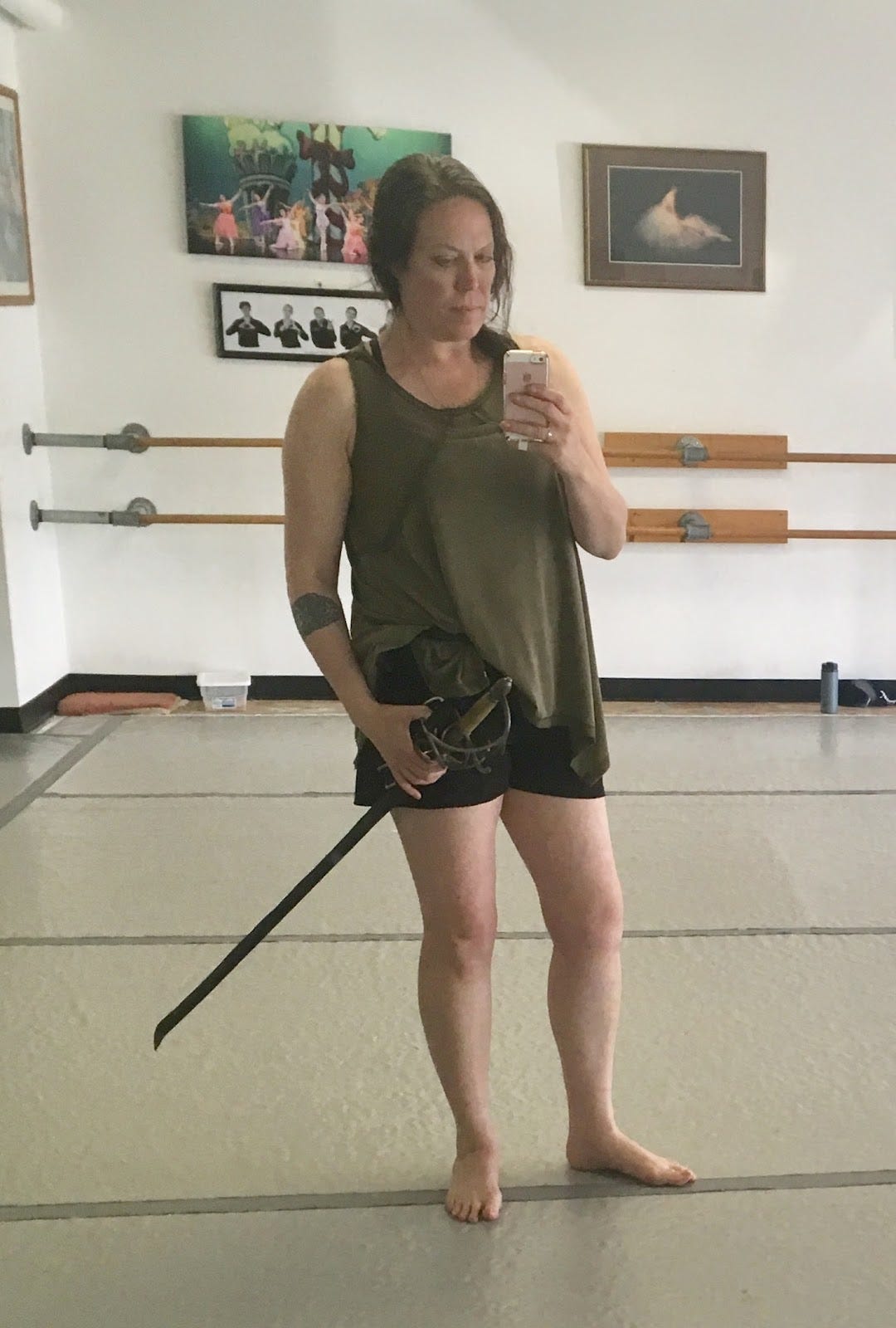
I’m not sure why she needed that info—I guess she wanted reassurance? But she was very sweet and awestruck. So I answered honestly: “with the unarmed stuff? Nope. It’s exactly the same. I even play the same movement games and do the same warmups. It’s no different. They do have steel swords, so it is slightly different in that way, but the techniques are the same.” This 11 year old girl was in an intensive summer ballet program, so she knew what ‘technique’ meant. She was surprised to hear this, pleasantly so.
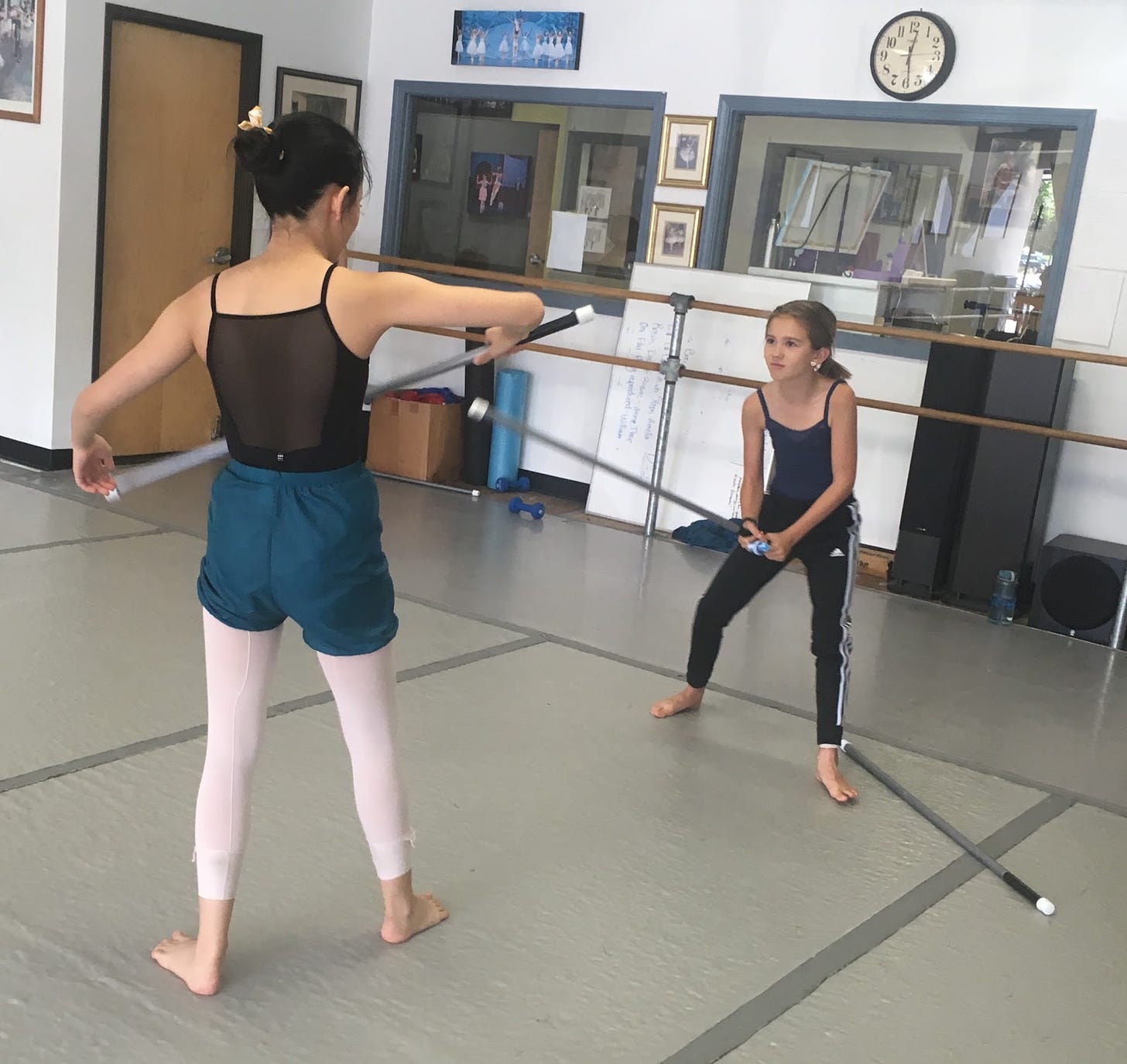
As a serious training facility, the courses at the LDTA required proper uniform for ballet classes, and the requirements are quite gendered, it being a classical art form. For girls, a black sleeveless leotard and pink tights are necessary. Pink shoes, either flats for beginner courses or pointe shoes for those learning to get up on their toes. No other colors are allowed. A filmy wrap skirt in pink or black is allowed for certain technique classes. Hair must be done up in a tight bun: not a ponytail, nothing that goes down the neck or even sits on the nape. A high, tight, bun is the only allowed hair style. So. Hence, ‘bunheads.’
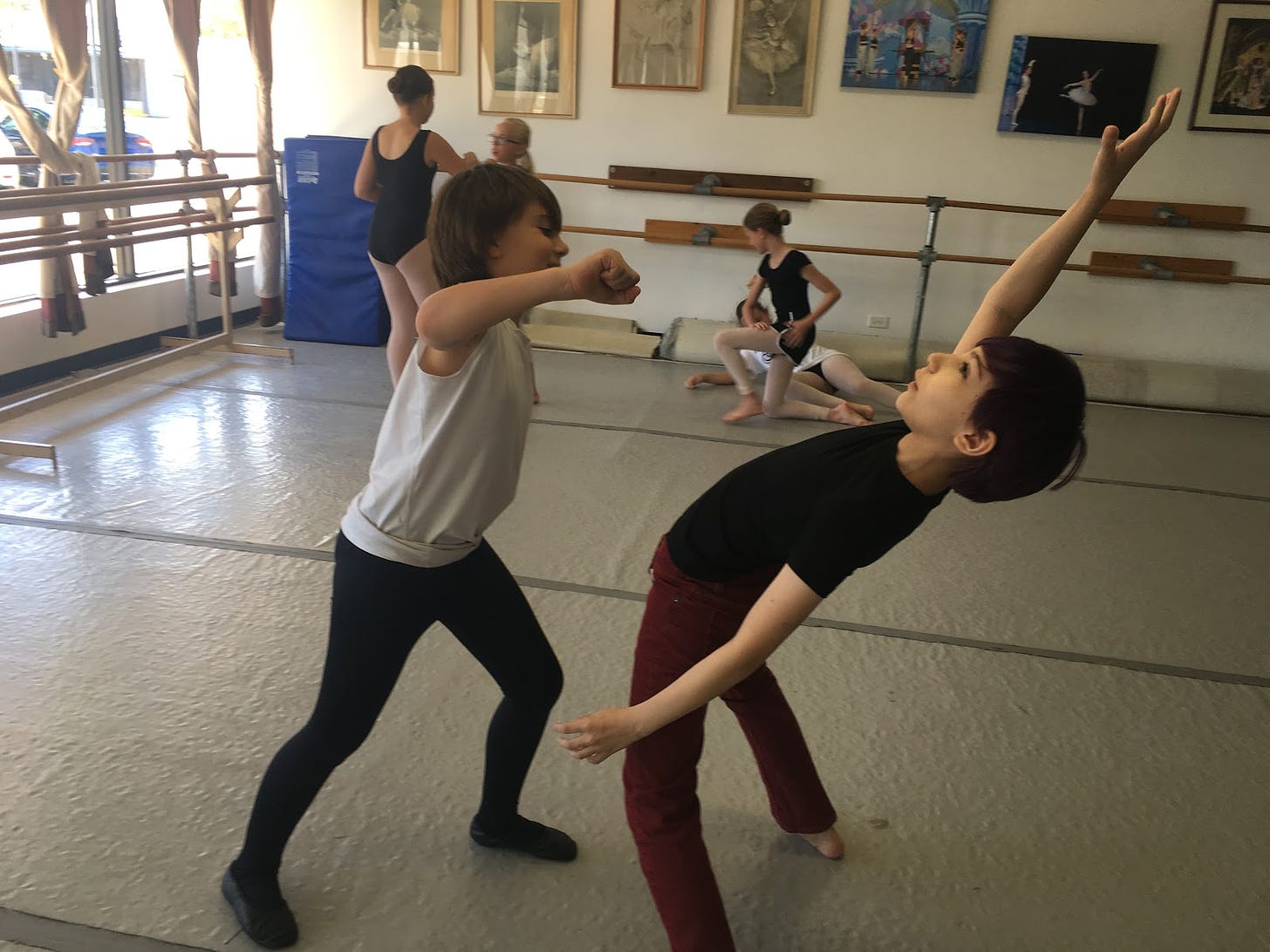
Boys must wear white fitted undershirts or leotards with short sleeves, and black tights. Older boys and men are required to wear a dance belt under said tights, and their shoes are always black. Boys never learn pointe.*
The exception to the rigid uniform requirements is for classes that have nothing to do with ballet, like: yoga, aerial, jazz, and my stage combat class. Girls would be so happy to change into sweats and shorts, and would let their hair down to such an extent that I had to tell them that, no, you still need to have your hair out of your face for these dangerous techniques. I’d beg the older girls to keep their pointe shoes on—oh how I wished one of their groups or pairings would create a fight scene involving pointe, but to my disappointment, they all wanted to get their poor feet out of those things as quickly as possible, and who can blame them.
*if you’ve never heard of Trockadero, famous all-male ballet troupe, I so very highly recommend checking them out. They’ve got male ballerinas; men who learn pointe and execute beautiful pas de deux, swan’s deaths, and all of it, in beautiful sparkling tutus with armpit and chest hair hanging out (actually these days they’re much more drag-groomed, but), amazing feats en pointe, and all the rest of what you think of when you think ‘ballerina.’ It’s glorious.
I like to keep to the realism of my style of stage combat, even though I’m teaching ballet artists. I do this because I feel like having that fundamental knowledge is more useful when then moving on to do things in a more dancey way, as opposed to the other way around. I begin with spatial awareness exercises and games of isolation. This is especially important for the chaotic squirrels that are the 10-14 year olds, in that: a) they need to continue to refine their physical perception; that is, their knowledge of where their bodies are in space, and b) isolation of body parts can bring you to so much cool shit—so many high level techniques, like mime and stage combat and better ballet, modern dance, and so many athletics. These at high levels are only achievable by knowing how to not move your body as one big hunk, but to isolate particular parts in a refined way. These kids are learning these things already, of course, training in ballet, so it’s actually great teaching them this difficult realistic stuff because they’re way ahead of the theatre club middle schoolers or even inexperienced high schoolers I work with. They already know how to do a lot of these fundamental base movement things, and so I can move on to the fun stuff, like how to grab your partner by the bun on her head, and slam her face into the barre.
Another unusual thing I always do for classes (not when I’m hired to do a play with the kids—then, I’ll choreograph fights for the show the same way I do for professional theatre companies): I use the last couple class sessions to allow the kids to take what they’ve learned and choreograph their own fights as a showcase. Most other stage combat organizations you’ll come across won’t do it like this; they’ll have the instructor give the class one set of choreography, and they’ll all do that, albeit with a different theatrical scene lacquered over the top of it. I don’t like this way of teaching, though I get why these others do it—they feel that the precision of technique is most important in that case, and also these tend to be organizations that jealously guard their systems. So I suppose, akin to Asian martial arts ryu-ha, they don’t want anyone altering their systems set in stone and legacy. I don’t agree.
I don’t ever see any student’s technical ability, beginner or otherwise, compromised by composing their own fight scenes. On the contrary: I see clearly, each time I teach, that by achieving that challenge, the students gain a deeper understanding of what goes into a good fight scene. They learn what it takes and what it means to make a good fight scene, learn why a fight happens in a story, how it showcases character, and all around end up understanding the art form much, much better by doing so.
Are the students’ fight scenes all brilliant, all perfectly executed and appropriate, let alone beautifully performed? Nope. Heck no, of course not. They just learned this stuff, of course their fights are ragged and need work. But to me, that’s not the point. I could give them something so much better, sure, but would that open doors to them being better theatrical fighters? Nope. They’d learn the moves by rote, never knowing why these moves link to each other. They won’t learn, really learn, stage combat this way. And, even worse, with these orgs that make everyone do different scenes on the same moves, nobody learns why these characters are doing these things to specifically these other characters. They can’t act while they fight, because all they’re doing is regurgitating moves.
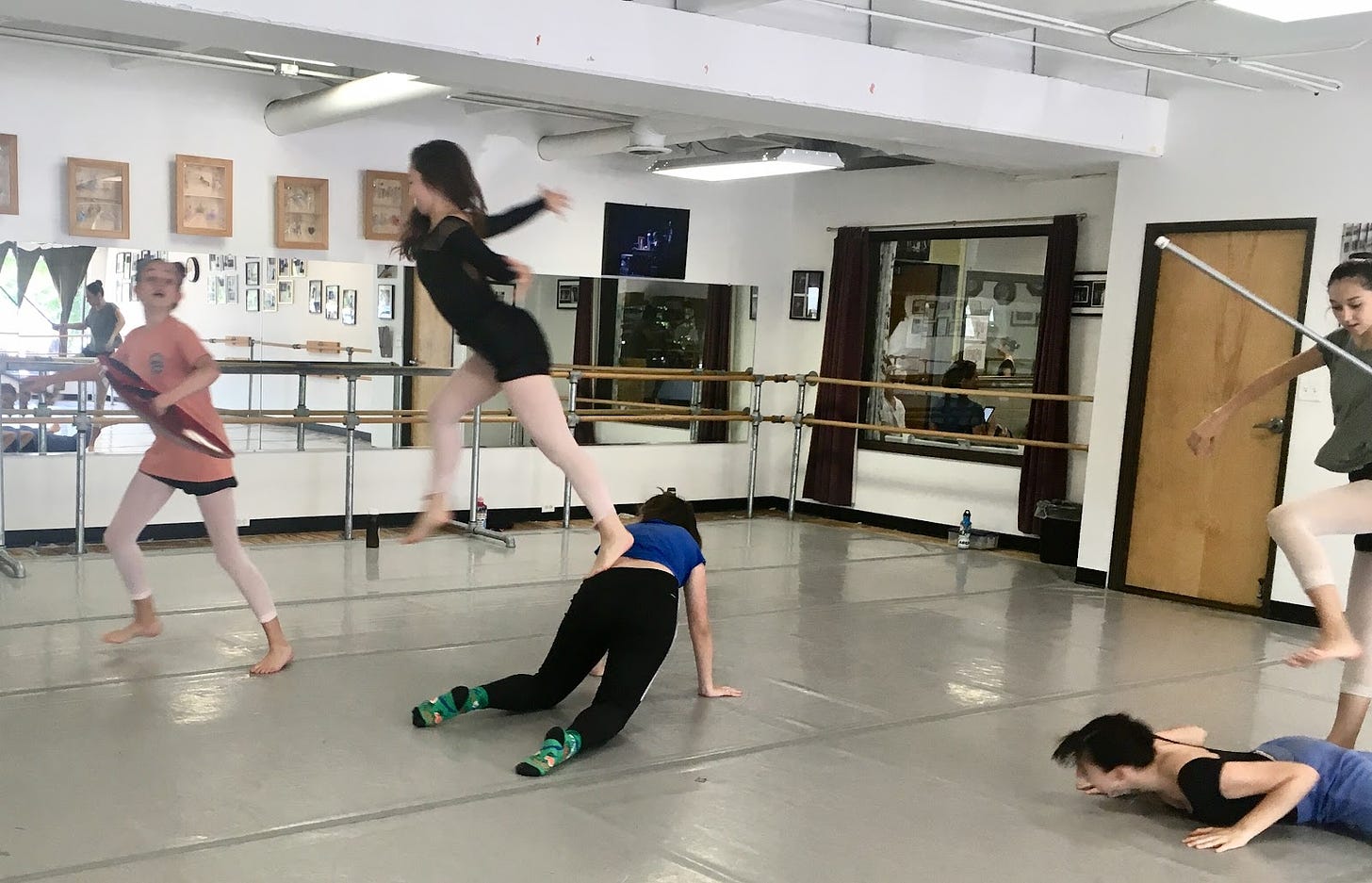
Of course, when these young artists then get into a professional situation, they’ll perforce be learning choreography that an expert has composed. But she’ll have composed it for their show and their characters specifically, and if the student as a professional understands the process the choreographer went through to create the moves they’re learning, they’ll be able to actually act them, not just perform them rote ‘cos the teacher said so.
These kids create such fun fight scenes, too—they get to make this stuff based on things they love, franchises and series that inspire them, and are why they wanted to take this class in the first place. I’ve seen college students do fight scenes to the most incredible scenes: one duo did the interminable final fight scene at the end of They Live; another duo fought with cans of soup, staffs, and a sword in a scene from Waiting For Godot (the “he asks if it hurts” line had a whole new meaning), and so much passionate Shakespeare…
The Longmont ballet bunheads did a sweeping Star Wars fight series one year (complete with lightsabers), an all-class Pirates of the Caribbean blowout another, and the last time I taught for them, they all wanted to be Marvel superheroes in a blockbuster final group fight a la Infinity War, complete with moments of slo-mo that they timed to a soundtrack perfectly.
I got an email recently, inviting me to a retirement party. It seems the LDTA is shutting down, for good. The founder and artistic director is the one retiring and that’ll be it. Though I haven’t taught for them since 2019 (in spite of some begging), I find myself wistful and sad. Nostalgic, even, for the experience and the time I spent with them. I wonder if any of the bunheads remember their classes with me, or if they’re even using any of those skills in other theatrical endeavors. I hope so.
NOTE: all pictures of LDTA students were taken and are shared with permission, from the LDTA, the students, and the students’ parents. I won’t name any of the students, but these pics were all taken during the summer session of 2019. The pic of me is from 2017.

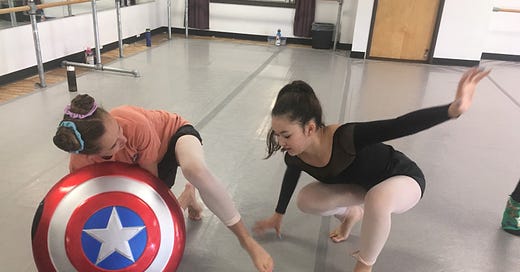


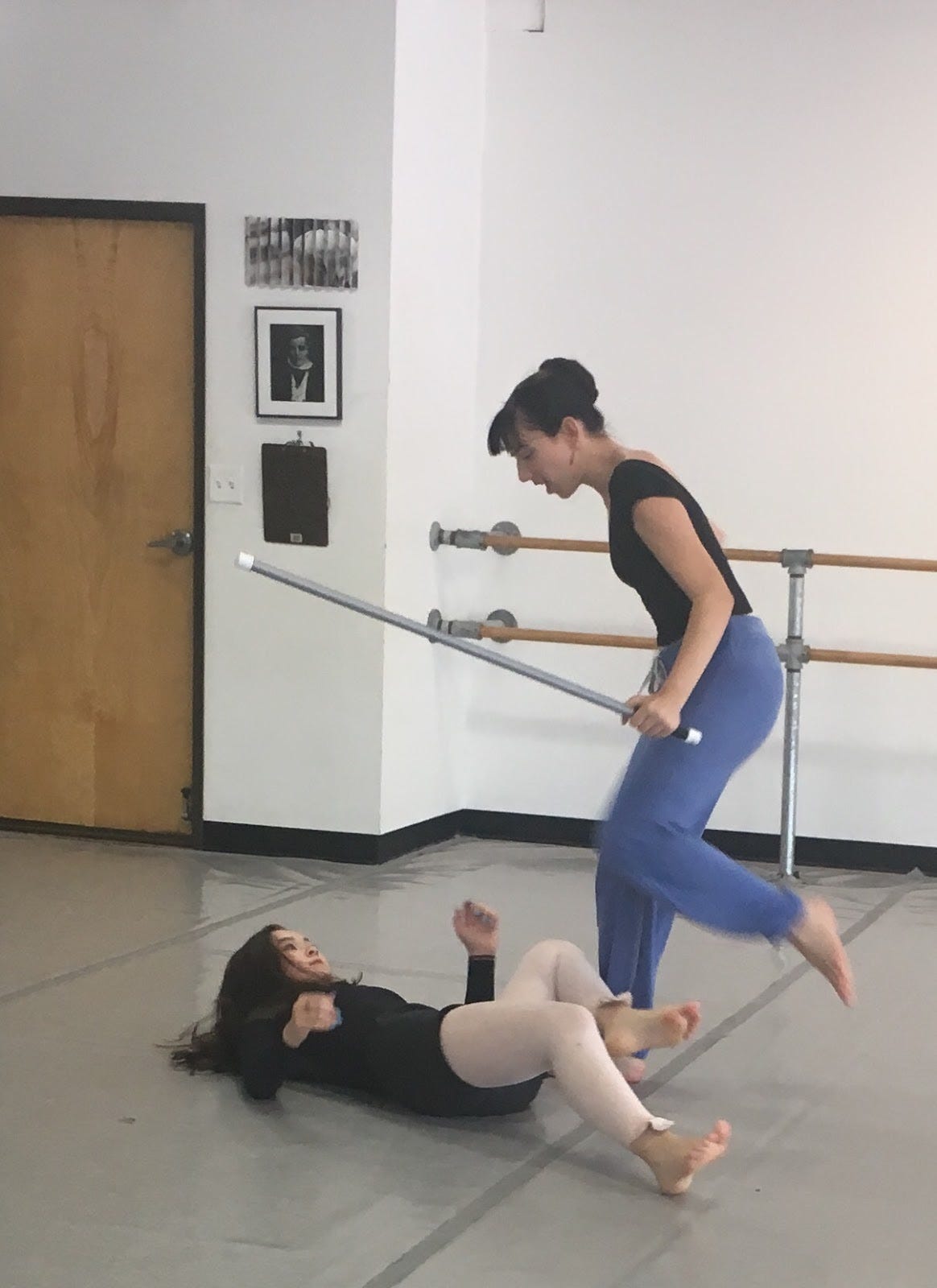

You sound like your mother and every modern dance teacher I’ve had